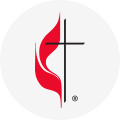Francis Asbury…
“North Carolina, which boasts the site of the first English settlement in America by Sir Walter Raleigh in 1585 was chartered by the Lords Proprietors in 1663 and was named in honor of Charles II of England. By 1674, the population was about, 4000.
Quakers were found in Hertford in 1671, Huguenots in the Pamlico area in 1690 and Lutherans in 1710 in New Bern. The Anglicans formed parishes and built meeting houses in the eastern portion of the colony; notable in St. Pauls in Edenton, built as early as 1701. The Reverend George Whitefield, an ordained Anglican priest who had been introduced to the “Holy Club” by Charles Wesley, made seven trips to America and journeyed along the coast preaching in meeting houses without organizing societies. Otherwise, Baptists appeared in rural communities as early as 1700. Similarly, after Hugh McAden’s trip to North Carolina in 1755, Presbyterian settlements formed, and within 20 years had increased to some 20,000 Scotch Highlanders living along the Cape Fear River and it tributaries.
Some immigrants arriving from the British Isles in our eastern ports had been influenced by John Wesley, but the first “Methodist” sermon in the state was preached at Currituck Courthouse on September 28, 1772 by the Reverend Joseph Pilmore, ordained appointee by Wesley to Philadelphia. Pilmore reached in other colonial towns along the coast on his southern tour to Savannah and organized the first society in New Bern during the Christmas week of 1772. Two years later, Robert Williams ventured into the state from Virginia, and John King the following year, preaching in homes and Anglican meetinghouses to organize the first societies along the northern tier of counties.”
Exerpted from “A Short History of the North Carolina Conference of The United Methodist Church, Southeasten Jourisdiction.” By C. Franklin Grill, Conference Historian
